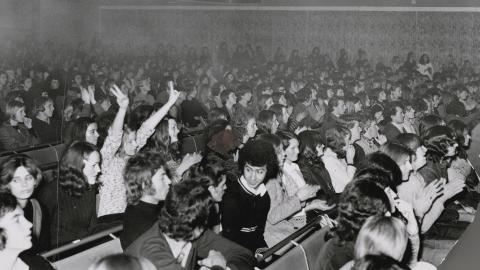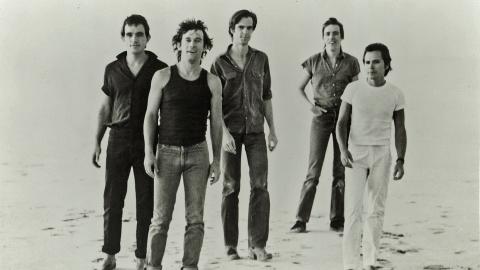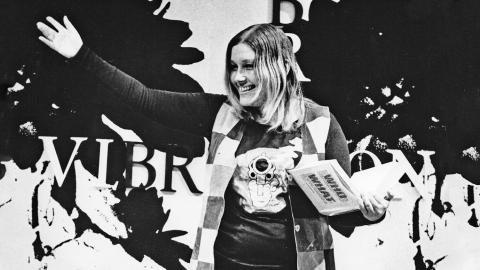
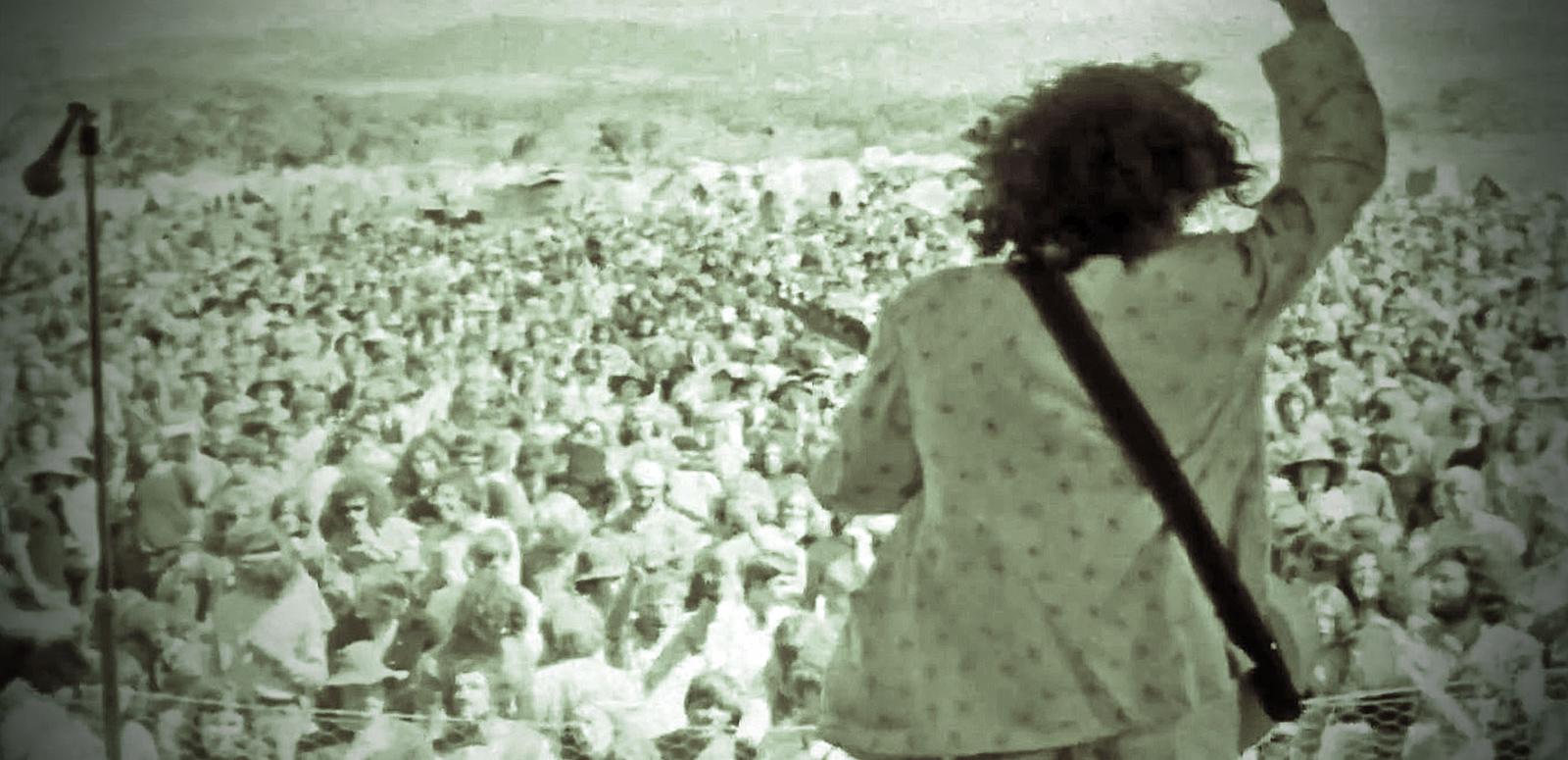
Eagle Rock
Restoring Eagle Rock
Fifty years after the distinctive opening guitar riff of one of Australia’s best loved rock anthems detonated across Australian radio, a rarely-seen experimental colourised version of Daddy Cool’s iconic promotional film clip for ‘Eagle Rock’ has been found and restored by the NFSA.
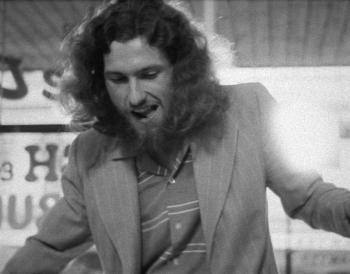
Originally shot on 16mm black-and-white film in 1971 by 23-year-old Melbourne filmmaker Chris Löfvén, the newly discovered version features a 37-second section using colour filters printed onto colour film stock. This particular print, though never intended for screening, was possibly seen by teenage audiences of 0-10 Network pop music program Happening 71 throughout 1971. Television viewers however would not have seen the full effects of this psychedelic-flavoured sequence, as colour transmission to Australian television sets did not roll out nationally until 1 March 1975. Edited into a new HD master digitised from the 16mm black-and-white inter-negative and synched with a digital transfer from the original 1971 45rpm stereo mix, this colour sequence is presented here complete for the first time.
Recorded for the NFSA’s Oral History Program in 2006 (NFSA title: 687069), Ross Wilson discusses the origin of the clip’s creation in this excerpt:
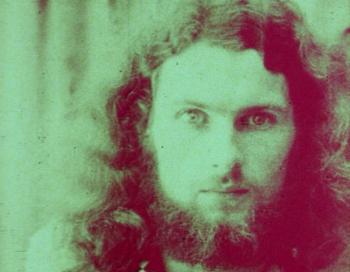
The chance discovery of this psychedelic sequence says much about the ubiquity of the clip’s imagery. NFSA Digital Specialist Craig Dingwall was transferring a 16mm black-and-white reel of assorted early 1970s music clips when he noticed something odd. ‘I knew the ‘Eagle Rock’ clip quite well and was shocked when halfway through I started seeing colour on my screen. I got straight on the phone to let curatorial staff know that this was something they had to see pronto!’
Upon inspection of the print, it became evident that both the rarely screened opening and closing moments of the film had been removed, a common occurrence for clips screened on TV programs. Thankfully, director Löfvén had lodged the 16mm black-and-white film originals of his seminal work with the NFSA back in 1989. This enabled technical staff to prepare a new digital master, copied directly from the duplicate negative containing the complete work. NFSA Video Editor Terry Stuetz then had the task of dropping in the colour section from the surviving scratchy print into the new black-and-white video master for its 37-second duration. Though the images in this coloured section were found to have been printed in reverse to the original black-and-white clip, these were retained unaltered to preserve the integrity of the discovered sequence in its original form.
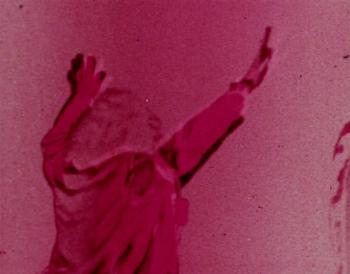
The producer of this coloured sequence was Larry Wyner, owner of Wyner Optical. Wyner’s services were frequently utilised by Fred Schepisi’s commercial production company The Film House (where Löfvén worked as an editor) in the production of several advertisements.
‘Larry had created some stunning cinema commercials for Coca-Cola using similar effects on footage shot in black-and-white,’ recalls Löfvén.
With the clip now completed, Löfvén, eager to show his latest after-hours production to anyone interested, excitedly screened the clip to Wyner. Offering to put a section of the clip through his optical printer, Wyner grabbed one of Löfvén’s 16mm black-and-white prints to work his magic. Alternating assorted colour filters over the existing black-and-white footage and then outputting onto colour film stock, Wyner knocked up a print to show Löfvén what could be produced. Created purely as an experiment, the results were never intended for external screening, as evidenced by only a portion of the clip being colourised. How a completed print found its way to a television station remains a mystery to both the director and the song’s composer. ‘I can only recall that a single work print with the coloured segment minus the soundtrack was spliced into an existing black-and-white 16mm print. I’m really surprised that a release print with picture and sound intact in the altered section was made and got out there somehow. I have not seen this version for decades and assumed it was lost forever’, said Löfvén.
Painstakingly transferred by NFSA audio technicians from the best available 7” copy of the ‘Eagle Rock’ 45rpm held in the NFSA’s collection, a digital file of the original stereo mix was used to synchronise sound with vision. Löfvén recalls that ‘we never played the record on set in the background as I don’t think copies had been pressed up. The synching therefore was always quite loose!’ Though recorded by engineer Roger Savage at Armstrong Studios in March 1971, 7” copies weren’t released until the last week of April, as producer Robie Porter took the multi-track recording to Los Angeles to supervise mixing. Ross Wilson recalls that ‘the sharp audio clarity and cleanness of the guitar sound without any reverb was thanks to this guy John – I can’t recall his surname – who did this super mixing job in the States – he really is an unsung hero in the success of this recording. ‘Eagle Rock’ still sounds contemporary today in no small part thanks to his work.’ Knocking The Hollies’ epic ballad ‘Too Young to Be Married’ from the top of the Australian charts on 10 July 1971, the song would retain its #1 position for an astonishing ten weeks. With sales of more than 85,000 copies by year’s end, ‘Eagle Rock’ was easily the biggest selling Australian single of 1971.
Chris Löfvén, at 23, was already a filmmaking veteran, having produced a series of highly regarded short films as a teenager including House with a Secret (1964), Forgotten Loneliness (1965) and The Warning (1966), all three winning prizes at the International Competition for Young Filmmakers in Milan. No stranger to making promotional film clips for local pop acts, Löfvén was cameraman on Hal McElroy’s promotional film clip for proto-punk Oz Rock classic ‘Little Boy Sad’ (1966) recorded by Melbourne ravers MPD Ltd (a film sadly believed lost) before graduating to directing clips for The Vibrants (‘Something About You Baby’, 1967), The Groop (‘Sorry’, 1967) and Spectrum (‘I’ll Be Gone’, 1971). Rarely without his 16mm Bolex camera, Löfvén’s frequent bursts of filming bands, parties, friends and family would culminate in his fascinating experimental 70-minute feature length production Part One – 806 (1971), shot over three years and featuring amongst many others, Ross Wilson and his then-current band Sons of The Vegetal Mother plus glimpses of a 1950s Doo Wop-inspired musical experiment the talented frontman had begun trialling onstage – Daddy Cool.
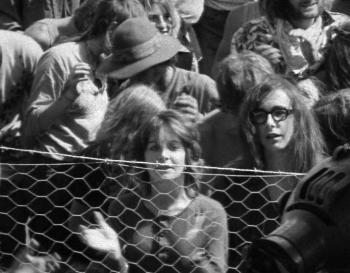
By the time Löfvén was officially commissioned to produce the ‘Eagle Rock’ clip in May 1971, a small archive of onstage Daddy Cool concert footage had already been accumulated, much subsequently included in the final edit. The outdoor sequences filmed in daylight were taken at The Australian Festival of Progressive Music, held in the South Australian township of Myponga on 30-31 January 1971, Wilson’s infamous foxtail clearly on display.
Löfvén’s camera also captured the lead singer’s pregnant wife Pat (of later 1980s ‘Bop Girl’ fame) clapping along in the front row, as the band won over an aggressive crowd with their mixture of good time rock‘n’roll and madcap onstage antics. Löfvén recalls that ‘as the cost of film stock taught me to shoot very economically, nearly all the footage of Daddy Cool I took at Myponga was included in the finished clip’.
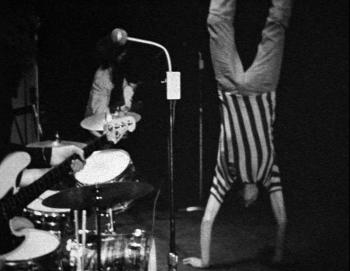
The scenes featuring lead guitarist Ross Hannaford attempting handstands were filmed in Melbourne at the Sidney Myer Music Bowl benefit concert for the SSAAF (Secondary Schools Aboriginal Affairs Fund), on 27 March 1971, the amazing Oz-Rock line up of Daddy Cool, Billy Thorpe & The Aztecs, Chain, Healing Force and Spectrum drawing a crowd of 40,000 and raising $20,000. Brief footage filmed inside a club while a large crowd danced in the foreground was likely captured on 3 April 1971 at a Daddy Cool performance at The Maze, 2nd floor, 378 Flinders Street, Melbourne, an ‘alternative’ club then run by folk duo Carrl and Janie Myriad and later avant-garde filmmakers Arthur and Corrine Cantrill.
Good fortune would play its part in one of the film’s key sequences. Löfvén’s next-door neighbours in Balaclava were friends with several zookeepers working at the Melbourne Zoo in Parkville. With their help, Löfvén and assistant director Lyne Helms organised to film a group of Wedge-tailed Eagles in the Zoo’s caged enclosure. Though given the opportunity to film at close range, the keepers’ warning that the eagles could become quite unpredictable convinced the director to film outside the enclosure. It’s a credit to his camera skills that the bars separating him from the birds are only briefly visible once. The director recalls that ‘the bird keepers mentioned they could get them to perform certain moves including a sort of rock from side to side as they moved forward on the ground, which happily fit in well lyrically within the song’.
The iconic opening sequence as Wilson walks into the takeaway food venue where bass player Wayne Duncan is ‘serving’ was filmed at 293 Clarendon Street, South Melbourne. Until recently, the venue still operated as a fish and chip shop, the distinctively shaped wooden door handle filmed in 1971 still evident in 2013. Löfvén had scouted for similar establishments in Balaclava and St Kilda near where he lived but none contained a jukebox essential for the clip’s planned introduction.
The two female companions in the takeaway shop seen clapping along as Wilson starts dancing were friends of a Film House colleague of Löfvén’s, whom the director had invited down. Löfvén’s work colleague can also be seen in the clip, sitting on Duncan’s white FJ Holden (alongside Lyne Helms) pointing at Wilson as he enters the shop.
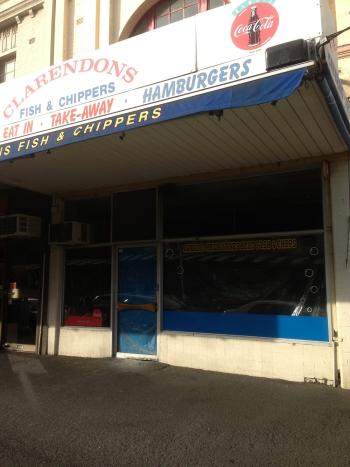
Director and lead singer both laugh today at a minor disagreement they had on set over the girls’ clothing, the director winning his request that the girls wear the latest fashions while Wilson wanted them in ’50s-styled attire, more in keeping with the scene’s retro setting.
Closer to Löfvén’s home would be the location of the film’s finale, as Wilson, Hannaford, Duncan and drummer Gary Young bolt across from Aussie Burgers in The Upper Esplanade, St Kilda (opposite Luna Park) to jump in Duncan’s FJ one final time to drive off towards the famous Esplanade Hotel and Australian music immortality.
The total budget for the film Löfvén recalls was ‘between $200 and $300’, all of which was spent on film stock, film processing and print production. Upon completion of the edit, a small number of prints (less than five) were processed at Victorian Film Laboratories in Hawthorn, then distributed by the director to a handful of outlets including one copy to Sparmac Productions, Robie Porter’s short-lived independent record label that had recently signed the band. Screened only once nationally on influential ABC TV youth program GTK (TX: 3 Aug 1971) and more frequently on Happening 71 across the 0-10 Network, the clip was credited with helping break the song in Sydney, traditionally a chart graveyard for Melbourne acts.
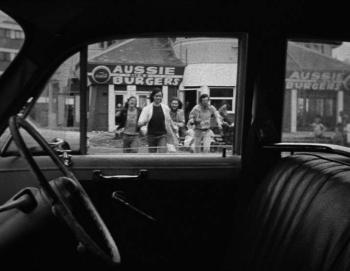
Interestingly, Löfvén’s clip was not seen as frequently on Australian screens at the time as in later years. Indeed, surviving footage of Daddy Cool performing ‘Eagle Rock’ in person on programs such as Hitscene (ABC TV), Move (NWS-9 Adelaide) and even GTK and Happening 71 suggest the promotional film was less screened at the time of the single’s domination than might be believed.
However, once lodged in these television station tape libraries, the frequent re-screenings of Löfvén’s most famous short film production throughout future decades of music video programming would create a lasting Australian rock music video iconography few other locally made clips would enjoy. As Ross Wilson would prophetically sing, ‘Good old Eagle Rock’s here to stay’.
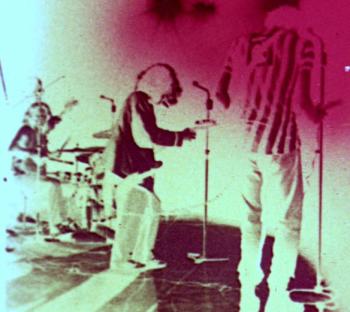
The newly restored psychedelic version of this ‘Eagle Rock’ clip has its big screen debut at The Astor Theatre, St Kilda on Saturday evening 25 May 2013 at the St Kilda Film Festival.
The screening is part of the One Step Ahead: Celebrating Australia’s Music Video Pioneers session with filmmakers Chris Löfvén, Ray Argall, Paul Goldman and Richard Lowenstein in attendance.
Daddy Cool can also be seen and heard in this documentary on australianscreen.
The NFSA honoured ‘Eagle Rock’ in 2010 when the song was added to the National Registry of Recorded Sound, which recognises the nation’s most important sound recordings.
With thanks to Chris Löfvén, Ross Wilson, Mark Sydow Management, Paul Harris and Sony Music Entertainment Australia for their assistance.
This article was first published in 2013. Some details were updated in 2021.
The National Film and Sound Archive of Australia acknowledges Australia’s Aboriginal and Torres Strait Islander peoples as the Traditional Custodians of the land on which we work and live and gives respect to their Elders both past and present.
